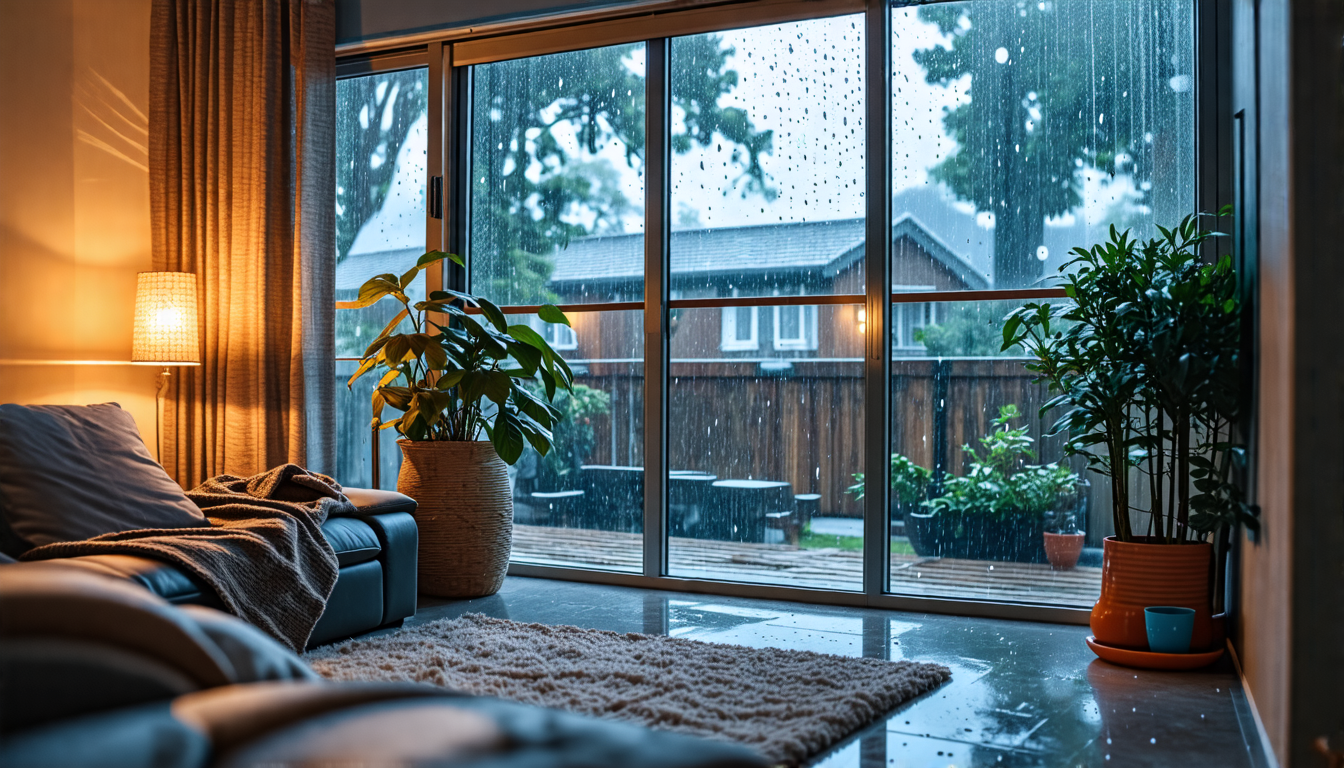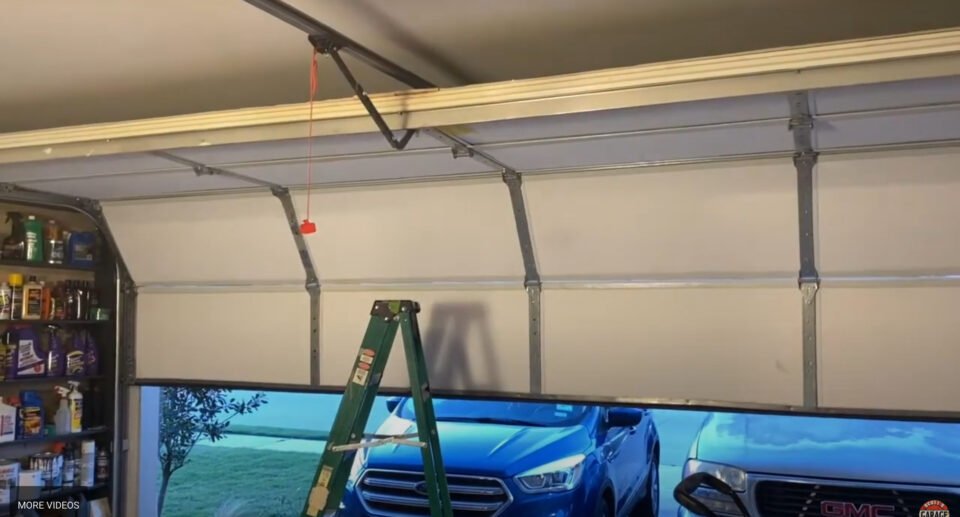The Best Windows for Homes in the Pacific Northwest: Top Picks for Rainy Climates

Living in the Pacific Northwest means embracing a unique climate that features abundant rainfall, blustery winds, and cooler temperatures. This region, known for its lush landscapes and scenic vistas, demands that homeowners make thoughtful choices when it comes to home construction and renovation, especially when selecting windows.
The right windows can significantly enhance comfort, energy efficiency, and protection against the elements. For homes in the Pacific Northwest, choosing windows that can withstand the challenges of a rainy climate is paramount.
This article explores the key considerations for selecting the best windows for this region and provides top recommendations tailored for wet weather conditions. From understanding essential window features like weatherproofing, durability, and energy efficiency, to examining the benefits of various materials such as vinyl, fiberglass, and wood-clad options, this guide will help Pacific Northwest homeowners make informed decisions.
With insights into top-performing brands and models, you’ll be equipped to choose windows that not only withstand the elements but also complement the unique beauty and demands of your Pacific Northwest home.
Introduction to Choosing the Best Windows for the Pacific Northwest
The Pacific Northwest is renowned for its stunning landscapes, lush greenery, and, notably, its rainy climate. With cities like Seattle and Portland experiencing high levels of annual rainfall, residents are well-acquainted with the unique weather patterns of this region.
The climate here is characterized by long, wet winters and mild, relatively dry summers, with persistent drizzle and overcast skies being a common sight throughout a significant part of the year.
In a region where heavy rains and strong winds are prevalent, selecting the right windows for homes becomes paramount. Not only do suitable windows need to withstand the incessant downpour and gusts, but they must also address energy efficiency to keep homes warm and dry.
Given the importance of maintaining a comfortable living environment while minimizing energy costs, homeowners must make informed decisions about the types of windows they install.
This article delves into the essential factors that must be considered when choosing windows for homes in the Pacific Northwest. It covers the importance of durability and weatherproofing, highlights the need for energy-efficient options, and explores effective ventilation solutions.
By understanding these key aspects, homeowners can make choices that enhance the comfort, functionality, and longevity of their windows, ultimately improving the quality of life within their homes.
Top Window Features for Rainy Climates
When selecting windows for homes in the Pacific Northwest, it is crucial to focus on features that cater specifically to the region’s rainy and often windy climate. Different window types offer various benefits and it is important to choose those that provide optimal performance in challenging weather conditions. Below are some key features to consider:
Weatherproofing and Durability
One of the foremost concerns in the Pacific Northwest is the ability of windows to withstand heavy rainfall and strong winds. Look for windows that have excellent weatherproofing capabilities. High-quality weatherstripping and seals are essential to prevent water from entering the home.
Materials like vinyl and fiberglass are known for their durability and resistance to swelling, warping, or deteriorating when exposed to moisture over prolonged periods. Additionally, windows with multiple layers of glazing provide better insulation and resistance against environmental elements.
Reinforced frames and high-rated impact-resistant glass also ensure longevity and minimal maintenance, making them ideal for stormy conditions.
Energy Efficiency
Energy efficiency is another critical factor to consider when choosing windows for a rainy climate like the Pacific Northwest. Given the region’s cold and damp weather, selecting windows that offer superior insulation can help reduce heating costs, making homes more energy-efficient and comfortable.
Look for windows that are ENERGY STAR® certified as they meet strict energy performance criteria set by the U.S. Environmental Protection Agency. Double or triple-glazed windows with low-emissivity (Low-E) coatings are particularly effective in reducing heat loss.
These coatings reflect heat back into the home during winter, enhancing indoor warmth without excessive reliance on heating systems. Gas-filled windows, which use inert gases like argon or krypton between panes, also provide enhanced insulation compared to traditional air-filled windows.
Ventilation Options
Proper ventilation is crucial in damp environments to reduce moisture build-up, prevent mold growth, and maintain good indoor air quality. Windows that offer versatile and secure ventilation options are beneficial in rainy climates.
Awning windows, for instance, are an excellent choice because they can be opened outward, creating a sloped surface that allows for ventilation even during rain without letting water into the home. Casement windows are another popular option; hinged at the side, they open outward, and their tight seal provides excellent protection against drafts and leaks.
Additionally, look for windows with adjustable ventilation locks that permit partial opening while maintaining security and weatherproofing. Sliding windows also offer controlled ventilation and are easier to clean and maintain, making them practical for rainy regions.
By focusing on these features—weatherproofing and durability, energy efficiency, and versatile ventilation—you can choose windows that not only withstand the Pacific Northwest’s rainy climate but also contribute to a comfortable, energy-efficient, and healthy living environment.
Whether you are replacing old windows or building a new home, considering these factors will ensure you select the best windows for your needs.
Top Picks for Windows in the Pacific Northwest
Vinyl Windows: Pros, Cons, and Why They Are Suitable for Rainy Weather
When it comes to choosing windows that can endure the Pacific Northwest’s notorious rainy weather, vinyl windows stand out for several reasons. Firstly, vinyl windows are known for their excellent weather-resistant properties. They do not warp, peel, or swell when exposed to high moisture levels, making them perfect for rainy climates.
Another significant advantage of vinyl windows is their low maintenance. Since they are made of synthetic materials, there’s no need for painting or frequent upkeep. Just a simple cleaning routine can keep these windows looking new for years. Moreover, vinyl windows are relatively inexpensive compared to other materials, offering both affordability and efficiency.
On the downside, vinyl windows may not offer the same aesthetic appeal as wood-clad alternatives. They are available in a variety of colors, but the customization options can be somewhat limited compared to other materials. Additionally, while modern vinyl windows have improved significantly, they may still face scrutiny when it comes to environment-friendly manufacturing processes.
Overall, vinyl windows are a resilient and cost-effective choice for homeowners in the Pacific Northwest, especially those looking for a low-maintenance option that can withstand heavy rainfall.
Fiberglass Windows: Durability, Maintenance, and Benefits for the Region
Fiberglass windows have gained traction as a popular choice in the Pacific Northwest due to their superior durability and resistance to harsh weather conditions. Unlike vinyl, fiberglass windows offer incredible strength and stability, making them less susceptible to warping or expanding due to moisture.
Fiberglass windows also provide excellent insulation, which is crucial for maintaining energy efficiency in homes exposed to the often chilly and damp weather of the region. The composite material used in fiberglass windows helps in keeping the heat inside during winter and can significantly reduce energy costs.
From a maintenance perspective, fiberglass windows require minimal effort. They resist corrosion and their color holds up well against UV rays, ensuring that they maintain their appearance over time. Plus, they can be painted to match any home design, providing a greater range of aesthetic options compared to vinyl.
However, these benefits come at a higher cost. Fiberglass windows tend to be more expensive upfront compared to vinyl, though their long lifespan and energy-saving benefits can offset the initial investment over time. For homeowners in the Pacific Northwest, seeking a durable and energy-efficient window, fiberglass is a commendable option.
Wood-Clad Windows: Combining Aesthetics with Functionality for Wet Climates
Wood-clad windows bring an element of elegance and warmth to any home, making them an attractive option for the aesthetically inclined. In the Pacific Northwest, they offer the best of both worlds by combining the beauty of wood with the durability of an exterior cladding material.
The exterior cladding—often made from vinyl, aluminum, or fiberglass—serves to protect the internal wood frame from moisture and decay, thus extending the lifespan of the window. This makes wood-clad windows particularly suitable for wet climates, where traditional wood windows might deteriorate quickly.
Besides their visual appeal, wood-clad windows are excellent insulators. Wood is a natural insulator, and when combined with the protective cladding, it results in windows that can keep homes warm and energy-efficient during the colder months.
However, potential drawbacks include the need for periodic maintenance to ensure the exterior cladding stays intact and the interior wood remains in good condition. Wood-clad windows are also typically more expensive than vinyl or even fiberglass options, making them a premium choice for homeowners willing to invest in long-term quality and design.
For those who prioritize both aesthetics and functionality, wood-clad windows are a worthwhile consideration in the Pacific Northwest’s rainy climate.
Comparative Analysis of Leading Window Brands and Models for the Pacific Northwest
When selecting the best windows for the Pacific Northwest, it’s essential to consider specific brands and models that have proven their reliability and performance in wet conditions. Here are some leading brands and their standout models:
Andersen Windows: Known for their durable and energy-efficient products, Andersen offers a range of options suitable for rainy climates. Their Andersen 400 Series uses wood-clad construction with a vinyl exterior, combining beauty, durability, and excellent thermal performance.
Pella Windows: Pella’s fiberglass Impervia line is particularly well-suited for the Pacific Northwest. These windows provide superior strength and durability, along with excellent insulation. Pella also offers wood-clad options in their Architect Series, combining elegant design with practical weather resistance.
Milgard Windows: Milgard’s Tuscany® Series vinyl windows are a popular choice for homeowners looking for a low-maintenance yet stylish option. These windows offer robust weather resistance and come with a Full Lifetime Warranty, making them a reliable pick for any home in the Pacific Northwest.
Each of these brands offers quality products tailored to withstand the region’s unique weather conditions. When making a decision, consider factors like your budget, desired aesthetic, and long-term maintenance requirements to find the window that best fits your Pacific Northwest home.
In conclusion, choosing the best windows for homes in the Pacific Northwest requires careful consideration of several critical factors, given the region’s unique weather patterns characterized by frequent rainfall and fluctuating temperatures.
This article has highlighted the significance of selecting windows that offer superior weatherproofing and durability to withstand heavy rain and strong winds. Energy efficiency is another paramount consideration, as high-performing windows can significantly reduce heating costs in the damp and cold environment.
Moreover, the ability to maintain proper ventilation without compromising waterproofing ensures a comfortable and healthy living space.
Among the top picks for the Pacific Northwest, vinyl windows stand out for their cost-effectiveness and resistance to moisture, though they may lack the refined aesthetics some homeowners desire. Fiberglass windows offer an excellent blend of durability and low maintenance, making them a practical choice for enduring the region’s wet climate.
Wood-clad windows combine the natural beauty of wood with the enhanced protection of external cladding, providing an attractive and functional option for style-conscious homeowners.
Ultimately, the best windows for homes in the Pacific Northwest will depend on individual preferences, budget, and specific needs. By considering the detailed features and comparative analysis presented in this article, homeowners can make informed decisions to select windows that not only enhance their home’s appearance but also offer lasting performance and energy savings in the region’s challenging weather conditions.

Hello, I’m Keith Jones. I’m the author and head of content here of door and window guide. I’ve been in the window and door industry for over 10 years in the UK and North America. I’ve had quite a few roles during my career mainly in Worldwide sales. I’m now semi retired so I thought I’d put my knowledge to good use educating people about all they might need to know about door and window related topics.








